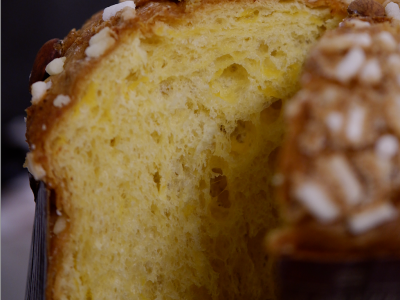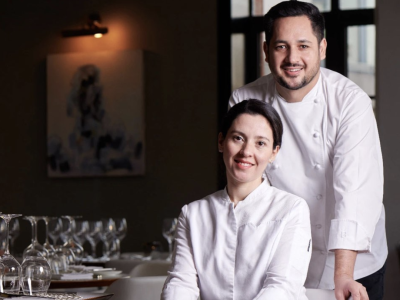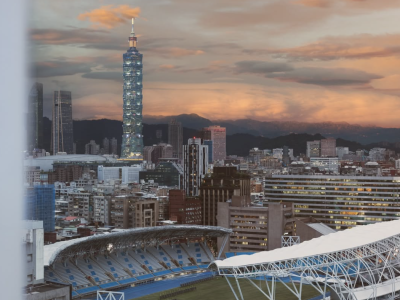Crowned five times as the world’s best restaurant, Noma held a four-day guest residency in Taipei from August 8–11, set against the lush backdrop of YMS by onefifteen on Yangmingshan. Once a 1950s dormitory compound, YMS has preserved its mid-century modernist architecture while weaving together natural scenery, art curation, and gastronomy—an oasis on the city’s edge. Within its grounds, Lab 10 and Restaurant 12 are the first to open, offering respectively a contemporary tea experience and a seafood-focused menu rooted in local waters.
This was not Noma’s first foray into staging experiences outside Copenhagen. In the past, it has hosted limited runs abroad, such as its collaboration with American Express in New York, designed to give those unable to travel to Denmark a taste of its world. The Taipei menu drew upon last year’s Kyoto residency, intertwining local seasonal ingredients with the heart of Nordic cooking—familiar yet newly refracted through a Taiwanese lens.
For YMS by onefifteen, the decision to debut with Noma as its very first guest event was nothing short of audacious. Yet the team at Restaurant 12 rose to the occasion with composure and grace. Noma’s 18-member core crew mirrored the rigor of their Copenhagen service, achieving a standard of execution rarely seen outside the mothership.
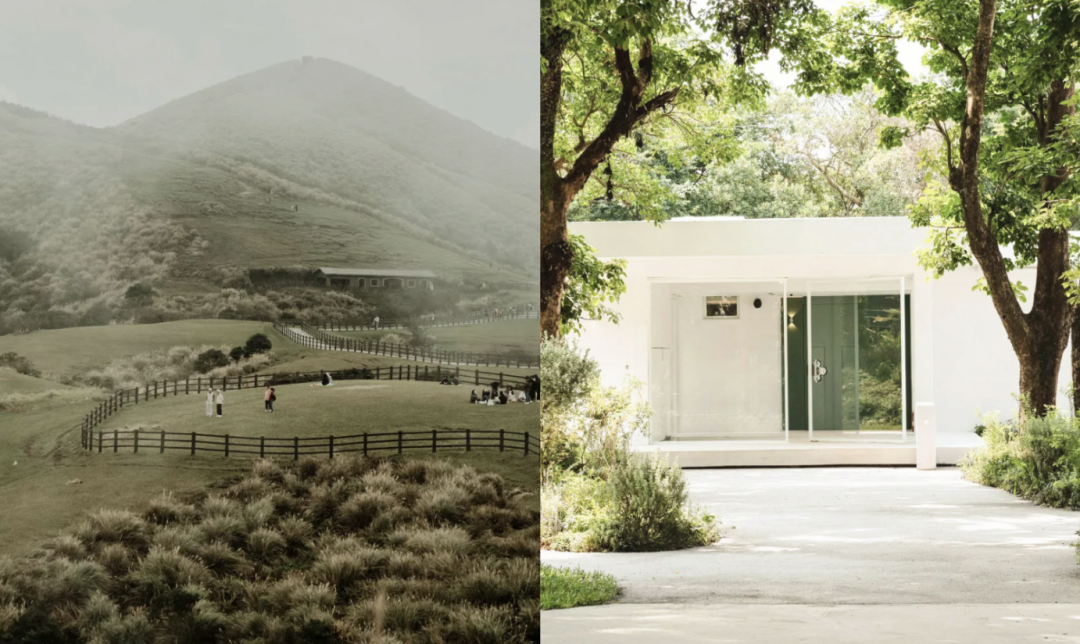 ymsbyonefifteen.com
ymsbyonefifteen.com
To experience this fleeting menu required more than a reservation—it demanded a pilgrimage. I was eager to tell Mario, “See you there.” He smiled: “Most of these dishesyou’ve already had in Copenhagen or Kyoto.” Yet this iteration promised something different: a “controlled experiment” of sorts—identical dishes reborn in a new setting, heightened by local ingredients, still carrying Noma’s unmistakable precision. Despite countless past visits, my anticipation remained as fresh as ever.
The Taipei residency was led by Noma’s essential figures. ThoughRené Redzepi himself could not attend due to YMS’s delayed schedule, the presence of Annegret Kühnert (Restaurant Director), Kenneth Foong (Head of Fermentation), Thomas Frebel (Creative Director), and Mario Fu (Head of Research, Fermentation Lab) underscored its weight. Even Co-owner Peter Kreiner joined the team. Working closely with Restaurant 12, the residency was more than a transplant—it achieved parity with Copenhagen.
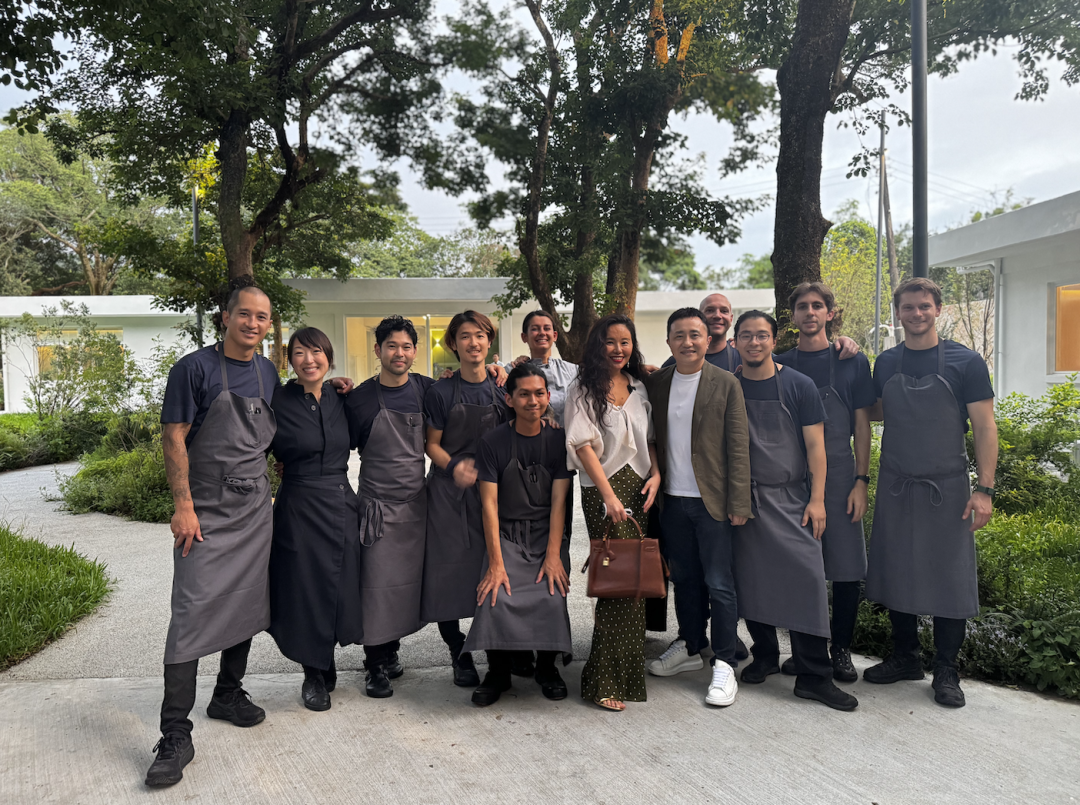 The author, Chef Max Wo of Regent Taipei and the Noma team
The author, Chef Max Wo of Regent Taipei and the Noma team
The drive from downtown Taipei to YMS takes 30–40 minutes. As we arrived, familiar Noma faces greeted us in the courtyard beneath the trees. A sunshower drifted across the mountains, and with it came the city’s most stylishelites gathered in one place.
Déjà vu. Familiar dishes unfolding in an unfamiliar landscape. Each course shimmered in memory and novelty. The opening sequence alone astonished: charcoal-grilled celeriac cubes with dried mango; moonflower, daylily, wild ginger blossom, and tuberose shoots brushed with parsley–angelica pesto; pickled pine-cone olives; fresh black truffle. Vegetables here felt revelatory, a testament to Noma’s celebrated “vegetable season,” still dazzling since Kyoto.
Among the most evocative dishes was the Toyama white shrimp miso crisp with peach resin, dotted with ants flown in from Denmark—crisp, briny, layered. Black rice with abalone and squid sauce recalled the comfort of crab sticky rice: abalone slices delicately chewy, the claypot rice crust crisp yet tender within, the squid sauce deep with marine intensity.
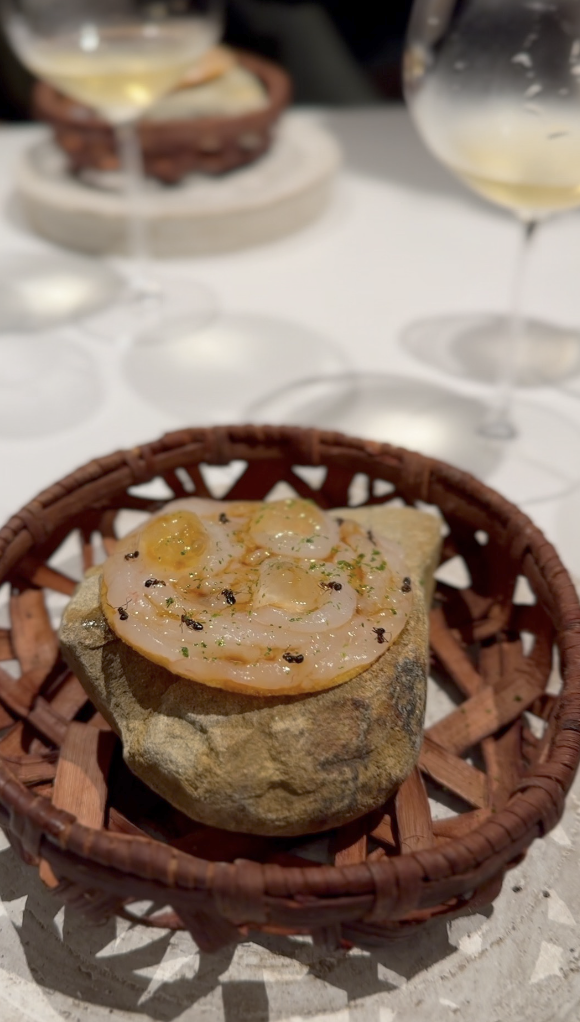 Sweet Shrimp Crisp | Ants
Sweet Shrimp Crisp | Ants
A playful surprise arrived in the form of kombucha SCOBY, resembling tuna sashimi. and bright with sweet-sour balance, cut through the richness of the grilled alfonsino fish with egg yolk sauce, acting like a refined pickle.
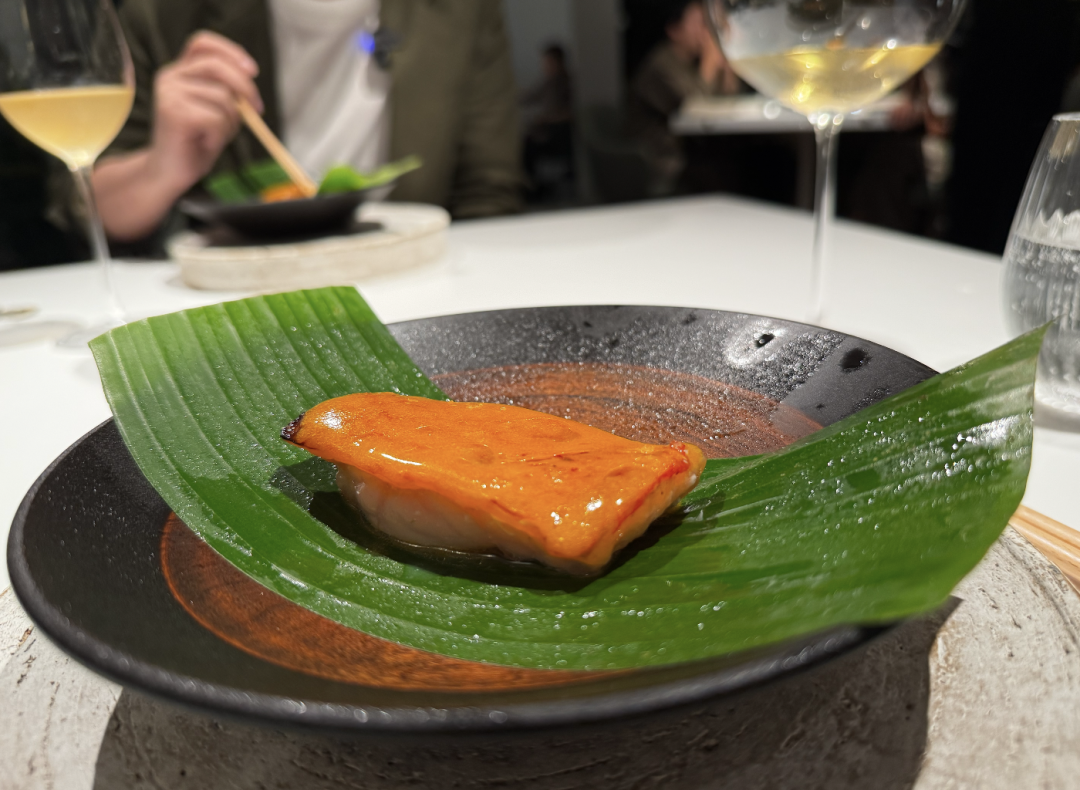 Kichiji Rockfish | Elderflower | Egg Yolk
Kichiji Rockfish | Elderflower | Egg Yolk
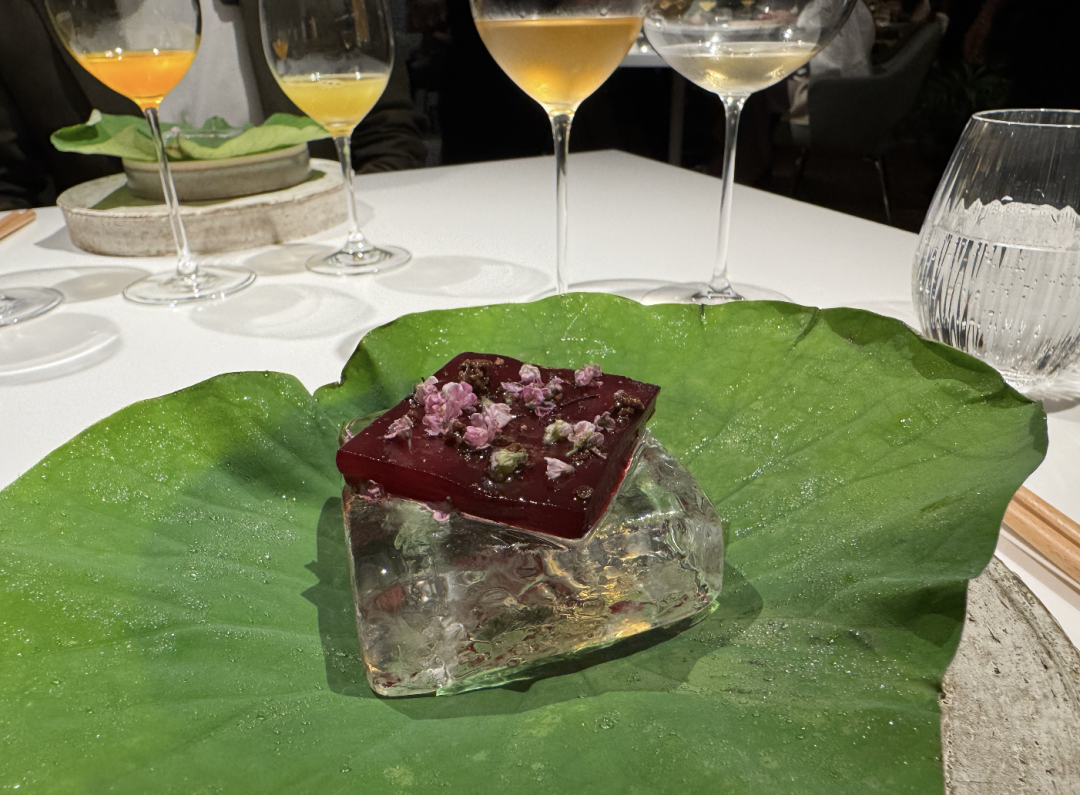 Kombucha | Blueberry
Kombucha | Blueberry
Other highlights included swordfish with warm kombu butter and caviar—the caviar nutty and luxurious, harmonizing seamlessly with the seaweed butter. A semi-dried koji tomato with uni and rose oil burst with acidity and sweetness, stealing the spotlight from the sea urchin itself.
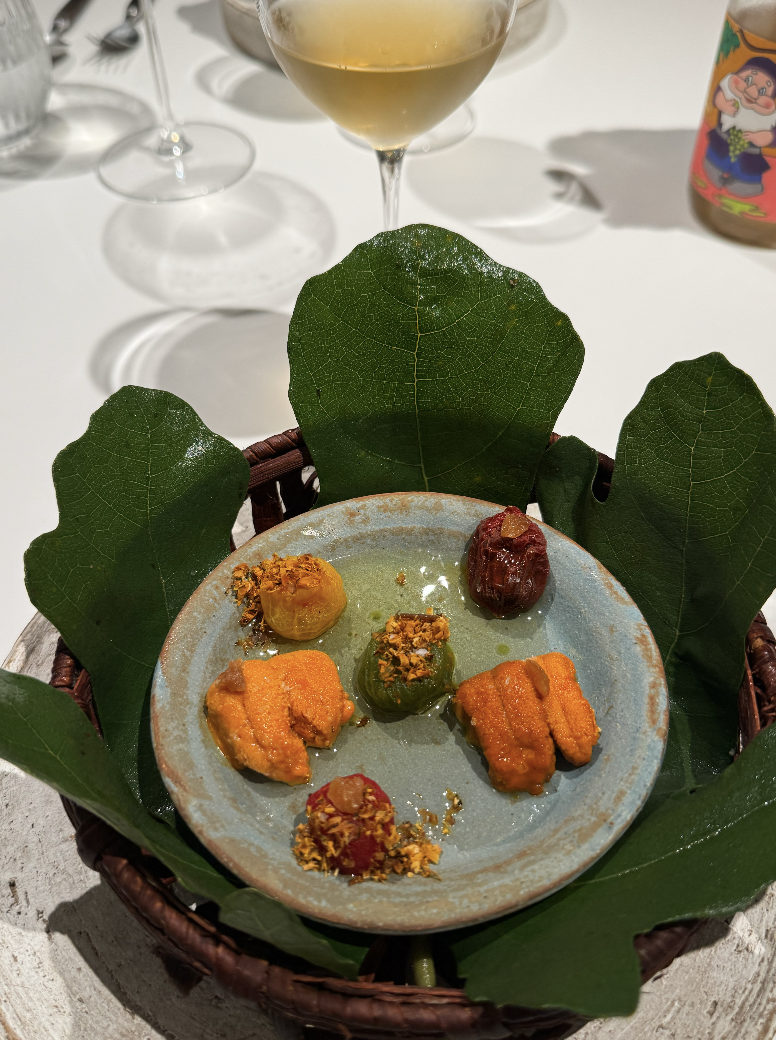 Tomato | Sea Urchin
Tomato | Sea Urchin
The main course, charcoal-grilled king crab legs with rose miso, marked my third encounter — Kyoto, Copenhagen, and now Taipei. Once served as an opening act, here it became the centerpiece. The crab was plump, juicy, and perfectly cooked, its sweetness explosive. For me, it remains a dish I would choose first, every time.
The king crab cold broth, sealed in a beeswax-coated shell, brimmed with ocean clarity. As Chef Max Wo of Regent Taipei remarked: “A chilled seafood broth often risks tasting fishy, but here the selection was impeccable.”
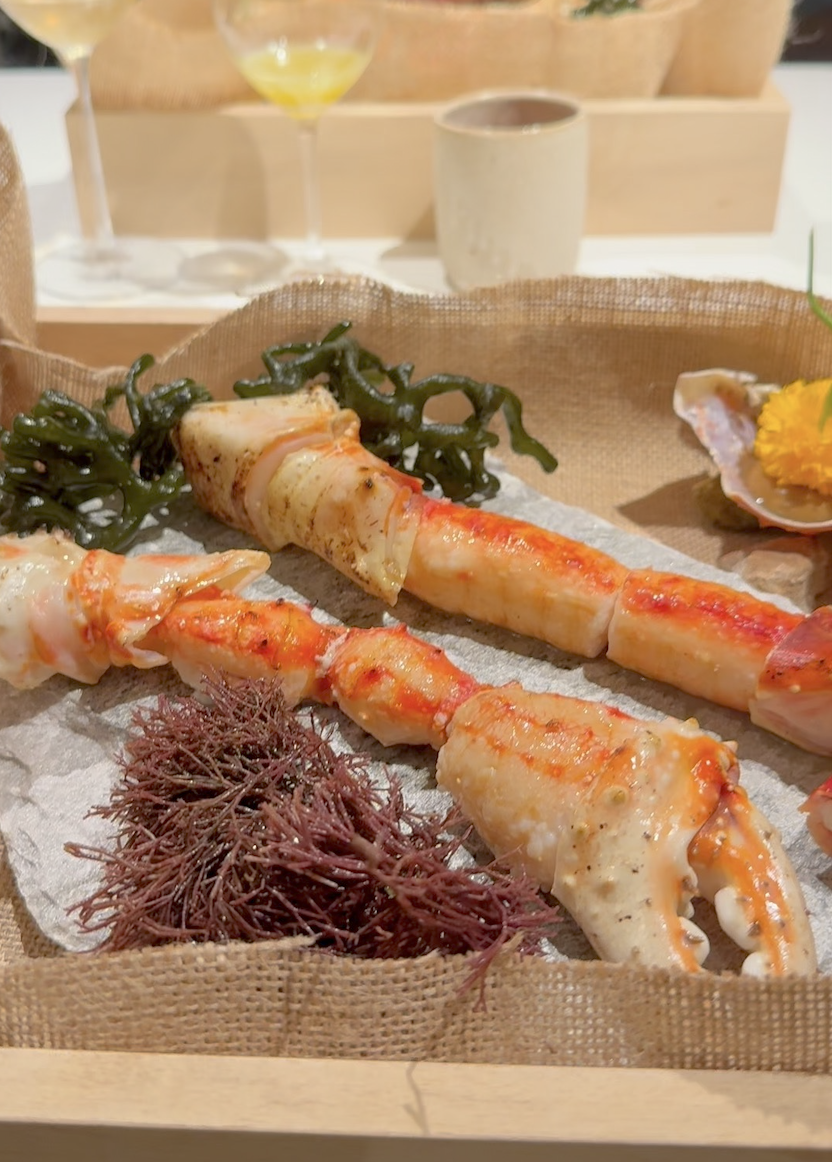 King Crab
King Crab
Desserts were measured yet playful: hazelnut ice cream with berries and candied chanterelles, a whimsical pairing of lychee, peach resin, and ants, and finally, the iconic “edible candle” — a walnut wick set in caramel, saffron, and cardamom, melting into toffee-like decadence. Its abrupt close left the sweetest sense of longing.
The fact that Noma can so deftly transplant itself, absorbing the nuances of local produce in a matter of weeks, while still delivering a taste wholly its own, is a rare feat. For YMS by onefifteen, inviting Noma as its first guest was a gamble, but one that paid off with resounding synergy, showcasing both shared philosophy and uncompromising craft.
To encounter Noma once more in a familiar city was a privilege, a déjà vu that felt entirely new. When YMS by onefifteen fully opens, with the option to stay overnight and dine, it will offer yet another dimension of experience—one more chapter in the unfolding story of place, cuisine, and memory.
Author: Jocelyn 华姐
Photos/ Video : Jocelyn 華姐


